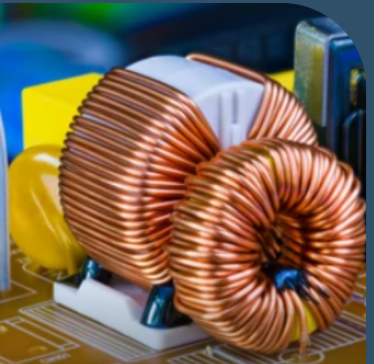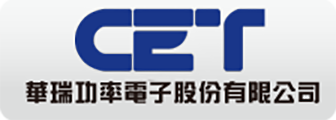How Air Core Inductors Work
In the complex field of electronics, inductors play an essential role in controlling and regulating electrical currents. However, within this vast family of inductors, a specific type stands out for its unique properties: the air core inductor. According to a report by the US Commerce Department, the electronics industry in the United States is projected to reach a staggering $500 billion by 2030. This growth signifies the ever-increasing demand for efficient and reliable electronic components, and air core inductors are expected to play an important part in this technological world.

This blog discusses inductors' importance in electronics, explores the specific attributes of air core inductors, and highlights their significant impact on modern electronics.
Understanding Inductors
Imagine a tiny electromagnet that resists changes in current. That's what an inductor is. When current flows through a coil of wire, it creates a magnetic field. If you change the current, the magnetic field tries to resist that change. Inductors store this resistance as energy, influencing how electricity behaves in a circuit.
Inductance, measured in Henry's (H), is a crucial aspect of inductors. It represents the strength of an inductor's opposition to current changes. Higher inductance signifies greater resistance. Understanding inductance is vital, affecting how a circuit responds to varying currents.
Their core material categorizes the three main types of inductors:
Iron Core Inductors: These are the most common type, utilizing iron's high permeability (ability to concentrate magnetic fields) to achieve high inductance values. However, iron cores can introduce losses at high frequencies.
Ferrite Core Inductors: Made from a ceramic material with iron oxide, ferrite cores offer a good balance between permeability and losses. They're widely used in various electronic applications.
Air Core Inductors: As the name suggests, these inductors have air as their core material, making them unique and valuable for specific situations.
What are Air Core Inductors?
Air core inductors stand out for their unique properties. Unlike their iron and ferrite counterparts, they don't rely on a ferromagnetic material to enhance the magnetic field. This design offers several advantages:
High Q Factor: The Q factor represents the quality of an inductor's resonance. Air core inductors boast a high Q factor due to minimal core losses like eddy currents and hysteresis (magnetic memory effect). This translates to sharper signal filtering and lower distortion.
Low Distortion: The lack of a core minimizes magnetic hysteresis and saturation effects, which can distort signals in other inductor types. This makes air core inductors ideal for applications demanding high signal fidelity.
Wide Frequency Range: Air core inductors operate effectively at high frequencies because air doesn't hinder magnetic field changes. This makes them perfect for radio frequency (RF) circuits.
However, there are also some limitations to consider:
Lower Inductance: Air core inductors have a core that amplifies the magnetic field, making achieving high inductance values easier. However, more wire turns may be necessary to achieve the desired inductance.
Susceptibility to Interference: The absence of a core makes air core inductors more susceptible to external magnetic fields, potentially affecting their performance. Careful design and shielding are crucial in such applications.
Size and Cost: Air core inductors may require more wire and significant form factors to compensate for lower inductance. This can impact their cost and size compared to some core-based alternatives.
Function of Air Core Inductors
Despite the limitations, air core inductors excel in specific applications:
Magnetic Field Generation: Their ability to operate at high frequencies makes them ideal for generating high-frequency magnetic fields. This is useful in RF circuits like antennas and transformers.
Inductance Calculation: The air core simplifies inductance calculations, as the core material doesn't introduce additional complexities. This allows for the precise design of circuits requiring specific inductance values.
Applications of Air Core Inductors
The unique properties of air core inductors make them well-suited for various electronic applications:
RF Circuits: Their high Q factor and wide frequency range make them perfect for tuning circuits, filters, and antennas in radio frequency applications.
Audio Systems: Air core inductors are prevalent in crossovers, tone controls, and high-fidelity audio equipment due to minimal signal distortion.
Power Electronics: While less common in high-power applications, air core inductors can be found in switch-mode power supplies, inverters, and converters, particularly high-frequency switching.
在线留言询价
- 一周热料
- 紧缺物料秒杀
| 型号 | 品牌 | 询价 |
|---|---|---|
| CDZVT2R20B | ROHM Semiconductor | |
| RB751G-40T2R | ROHM Semiconductor | |
| TL431ACLPR | Texas Instruments | |
| BD71847AMWV-E2 | ROHM Semiconductor | |
| MC33074DR2G | onsemi |
| 型号 | 品牌 | 抢购 |
|---|---|---|
| IPZ40N04S5L4R8ATMA1 | Infineon Technologies | |
| STM32F429IGT6 | STMicroelectronics | |
| TPS63050YFFR | Texas Instruments | |
| BP3621 | ROHM Semiconductor | |
| BU33JA2MNVX-CTL | ROHM Semiconductor | |
| ESR03EZPJ151 | ROHM Semiconductor |
AMEYA360公众号二维码
识别二维码,即可关注
























